Photography plays a crucial role in sharing and perceiving travel experiences; practicing responsible travel photography has never been more important. It’s about capturing the world’s beauty with respect for the environment, local cultures, and future generations. This guide explores photogenic destinations and embodies the principles of sustainability and respect, offering photographers the chance to capture stunning imagery while adhering to ethical practices.
1. Banff National Park, Canada
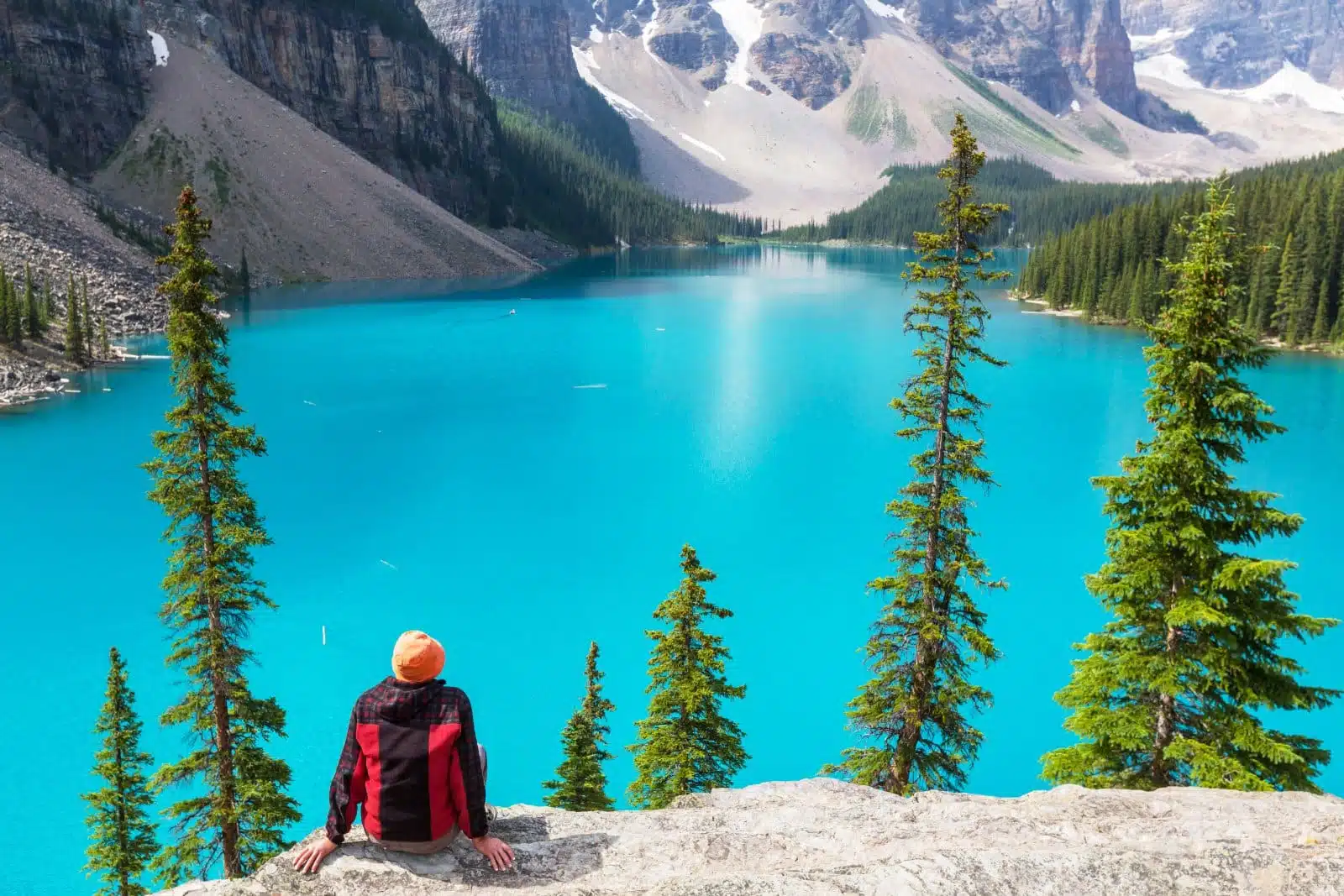
Image Credit: Shutterstock / Galyna Andrushko
Banff National Park, nestled in the heart of the Canadian Rockies, is a sanctuary of majestic peaks, turquoise glacial lakes, and vast wilderness. As Canada’s first national park, Banff offers photographers unparalleled natural beauty, from the serene waters of Lake Louise to the rugged grandeur of Moraine Lake. The park’s diverse wildlife, including elk, grizzly bears, and wolves, adds a dynamic element to any photo shoot, demanding a respectful distance and a keen eye for candid moments. The Icefields Parkway, stretching between Banff and Jasper, is a journey through some of the world’s most scenic landscapes, offering endless photography opportunities. Responsible travel photography in Banff means adhering to park regulations, staying on designated paths to protect the delicate ecosystem, and capturing the natural environment without leaving a trace. The park’s commitment to conservation and protecting its natural and cultural heritage makes it a prime example of how tourism and environmental stewardship coexist.
Insider’s Tip
Focus on capturing the natural beauty without disturbing the wildlife. Use a zoom lens to photograph animals from a distance and stay on designated trails to protect the natural habitat.
When to Travel
Summer (June to August) is for hiking and photography, and winter (December to March) is for snowscapes and northern lights.
How to Get There
Fly into Calgary International Airport, then drive about 1.5 hours west to Banff.
2. Kyoto, Japan
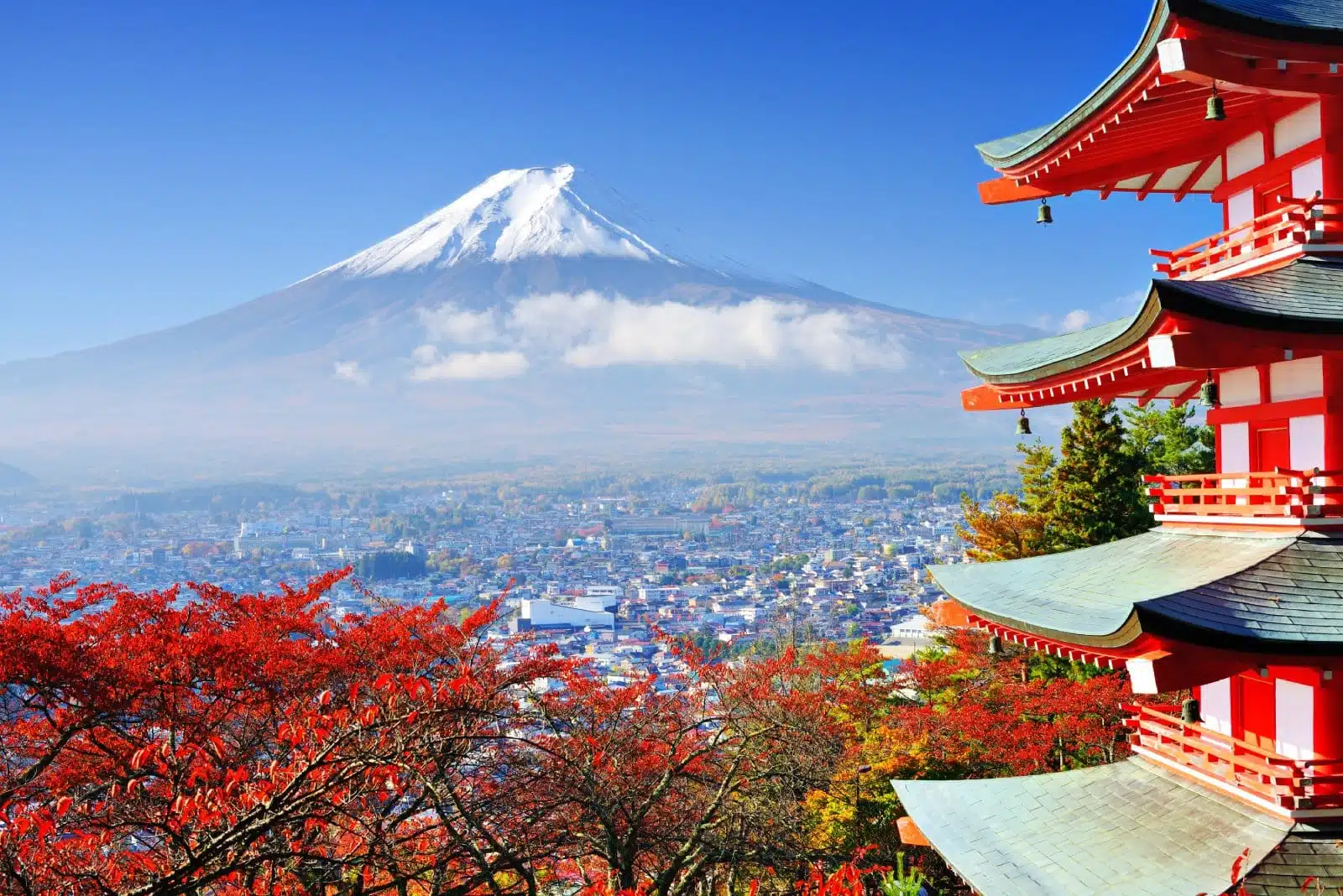
Image Credit: Shutterstock / Sean Pavone
Kyoto, the heart of traditional Japan, presents a rich cultural heritage, serene landscapes, and architectural wonders. The city’s ancient temples, such as Kinkaku-ji (the Golden Pavilion) and Kiyomizu-dera, stand as monuments to Buddhist devotion and Japanese aesthetics, offering photographers a glimpse into the soul of Kyoto. The historic geisha district of Gion, with its wooden machiya houses and stone-paved streets, provides a backdrop for capturing the enduring traditions of Japan. During cherry blossom season, the city transforms into a picturesque tableau of delicate pinks and whites, with Maruyama Park and the Philosopher’s Walk prime photography locations. Photography in Kyoto involves respecting the privacy of geishas and locals, avoiding intrusive behavior, and appreciating the city’s cultural sites with mindfulness and reverence. Engaging with the local community, understanding the significance of the sites, and contributing to preserving Kyoto’s heritage are key aspects of responsible travel photography in this ancient city.
Insider’s Tip
Always ask for permission before taking photos of people, and be mindful of private property signs when exploring Kyoto’s narrow alleys and traditional neighborhoods.
When to Travel
Cherry blossom season in early April or autumn foliage in November for stunning natural backdrops.
How to Get There
Fly into Kansai International Airport and take a train or bus to Kyoto.
3. Petra, Jordan
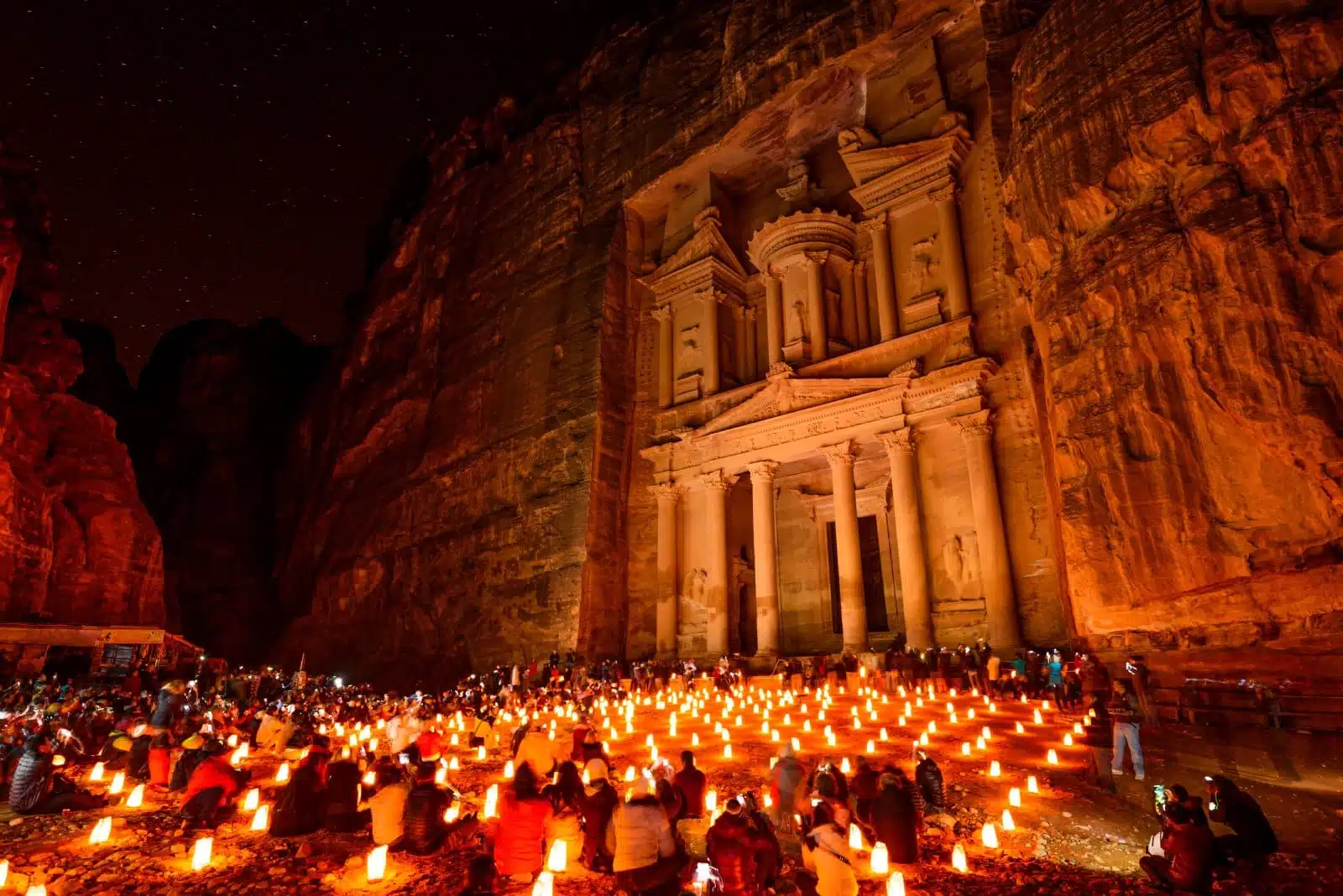
Image Credit: Shutterstock / Hamdan Yoshida
The ancient city of Petra, carved directly into vibrant red sandstone cliffs, offers an unparalleled opportunity to step back in time. This archaeological feat, once a thriving trading center, now invites you to explore its tombs, temples, and theaters. Visitors should avoid climbing on fragile structures or entering areas that are closed for restoration. The best photographs of Petra come from those who take the time to understand its history and significance, offering viewers a glimpse into the past that respects the efforts to preserve it for the future.
Insider’s Tip
Visit Petra early in the morning or late in the afternoon to avoid the crowds and capture the best light.
When to Travel
Spring (March to May) and autumn (September to November) for mild weather.
How to Get There
Fly into Queen Alia International Airport in Amman, then drive or take a bus to Petra.
4. Machu Picchu, Peru
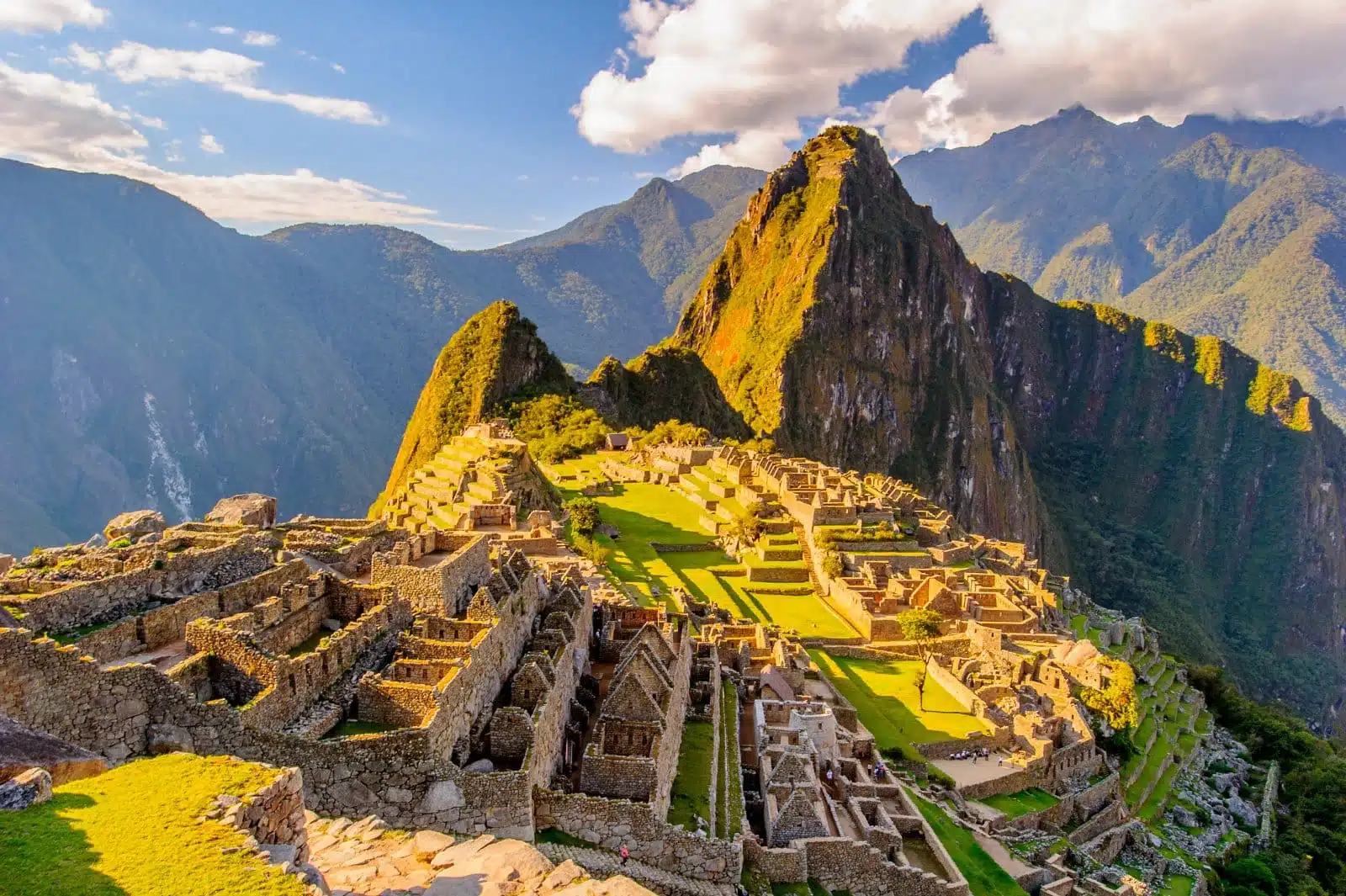
Image Credit: Shutterstock / Anton_Ivanov
Machu Picchu, the iconic Incan citadel set high in the Andes Mountains, is a masterpiece of engineering and architecture. Its precise stone constructions, built in harmony with the earth and sky, offer a window into the Incan world and its spiritual connection to nature. This UNESCO World Heritage site, surrounded by lush cloud forests and towering peaks, is a photographer’s dream for its breathtaking vistas and a place of deep cultural reverence. Photographers are encouraged to be mindful of where they step, staying on designated paths to prevent erosion and damage to the ancient stones. The use of tripods is restricted within the site to minimize impact and congestion, and drones are prohibited to preserve the peace and sanctity of the surroundings.
Insider’s Tip
Use the natural light of dawn to capture Machu Picchu in its most magical and least crowded state, and follow the guidance of local authorities regarding the use of tripods and drones.
When to Travel
Dry season from May to October for clearer skies and safer hiking conditions.
How to Get There
Fly to Cusco from Lima, then take a train to Aguas Calientes and a bus up to Machu Picchu.
5. Great Barrier Reef, Australia
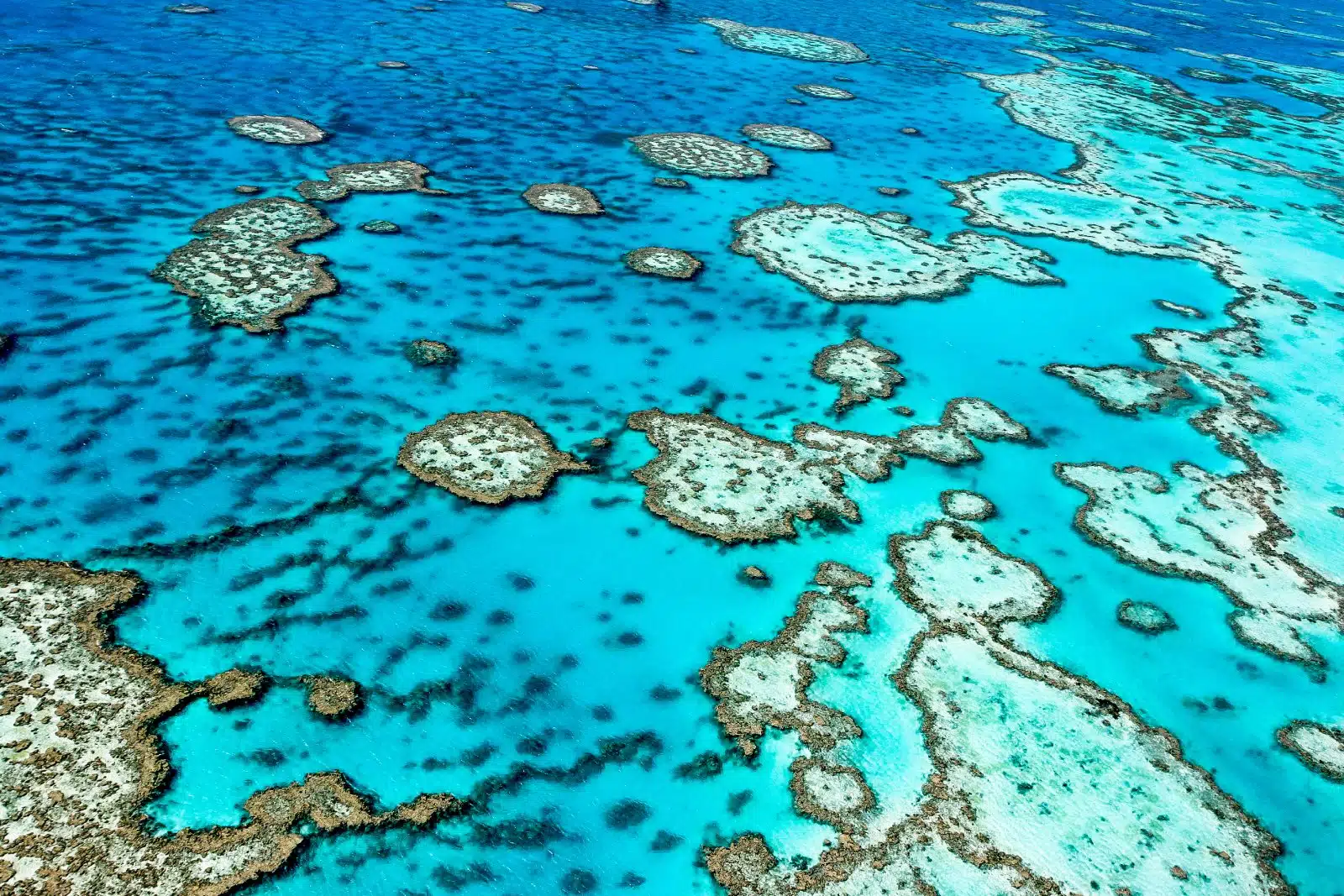
Image Credit: Shutterstock / Edward Haylan
The Great Barrier Reef, the world’s largest coral reef system, is a kaleidoscope of marine life and vibrant corals stretching over 2,300 kilometers along the Queensland coast. It’s home to thousands of species of fish, mollusks, sharks, turtles, and an array of stunning coral formations. Photographers are drawn to the reef’s underwater beauty, seeking to capture its vivid colors and dynamic ecosystems. However, the reef faces threats from climate change, pollution, and human activities, making responsible photography more crucial than ever. Photographers should practice minimal impact diving and snorkeling, ensuring they do not touch or step on the coral, which can cause significant damage. It’s also important to be mindful of marine life by maintaining a respectful distance, avoiding the temptation to chase or harass creatures for the perfect shot. The use of natural light is encouraged to preserve the true colors of the reef and minimize disturbance to its inhabitants.
Insider’s Tip
Use natural light as much as possible to avoid stressing marine life with flash, and never touch or stand on the coral reefs to get a better shot.
When to Travel
June to October for the best underwater visibility and diving conditions.
How to Get There
Fly into Cairns International Airport, with numerous options for reef tours departing from Cairns and Port Douglas.
6. Venice, Italy
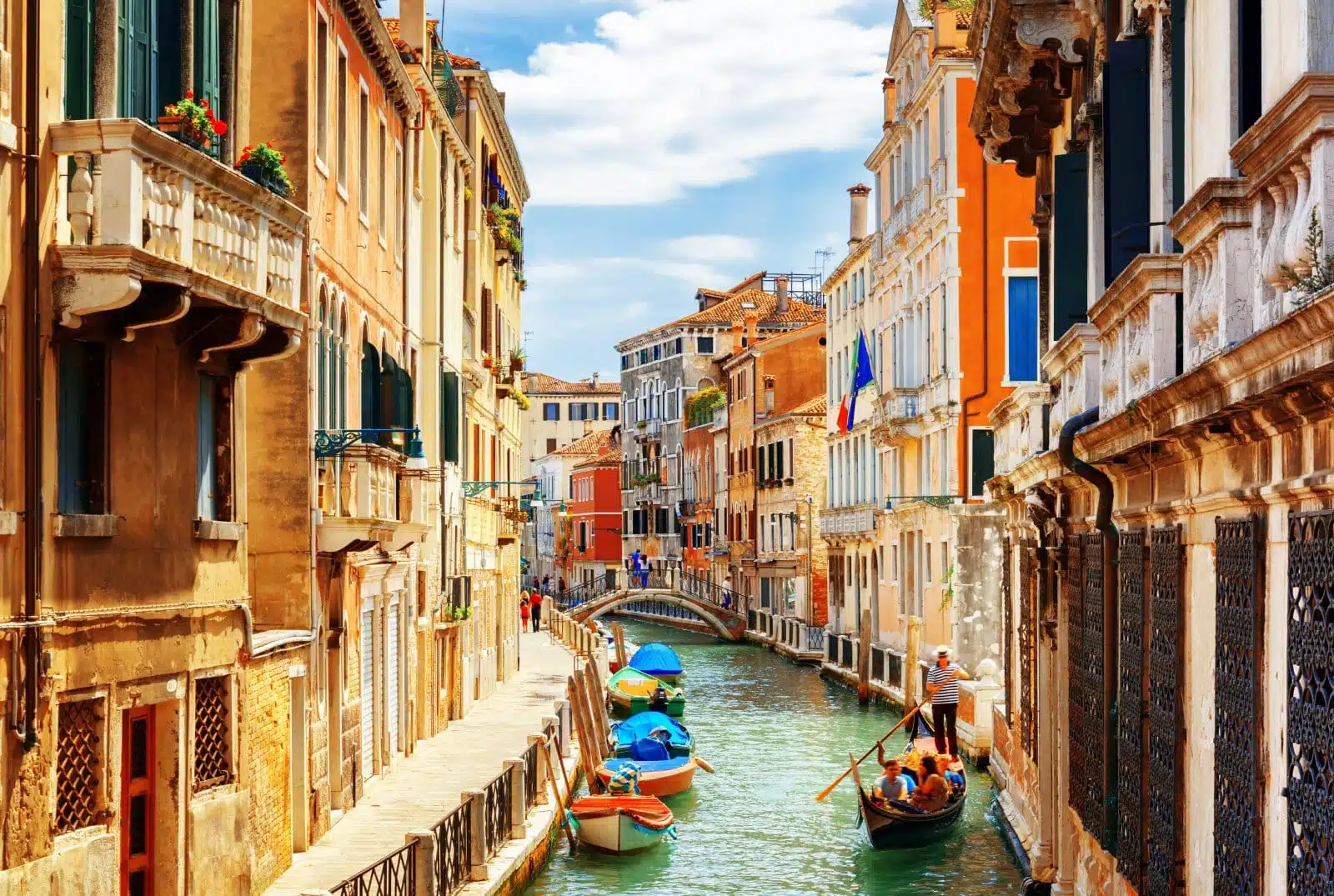
Image Credit: Shutterstock / Efired
Venice is famed for its intricate waterways, historic architecture, and rich artistic heritage. This floating city, built on a lagoon, is made up of winding canals, grand palazzos, and vibrant squares, each telling a story of Venice’s glorious past. However, Venice is also a city grappling with the impacts of climate change, rising sea levels, and the effects of mass tourism, making mindful photography practices essential. Photographers are drawn to the iconic sights of St. Mark’s Basilica, the Rialto Bridge, and the Grand Canal, yet there’s a deeper narrative to be captured in the quieter, less-visited areas that reveal the authentic Venetian lifestyle. Use your photography to highlight the city’s beauty and fragility, focusing on themes such as conservation, the impact of climate change, and the importance of sustainable tourism. Avoid contributing to congestion in popular tourist spots by exploring alternative viewpoints and compositions that tell a unique story of Venice.
Insider’s Tip
Seek out less-visited areas of Venice for unique shots that also help disperse the impact of tourism away from the most crowded spots like St. Mark’s Square and the Rialto Bridge.
When to Travel
Spring (April to June) and autumn (September to November) to avoid peak tourist seasons and flooding.
How to Get There
Fly into Venice Marco Polo Airport or Treviso Airport for budget airlines, then take a water taxi or vaporetto to the city.
7. Serengeti National Park, Tanzania
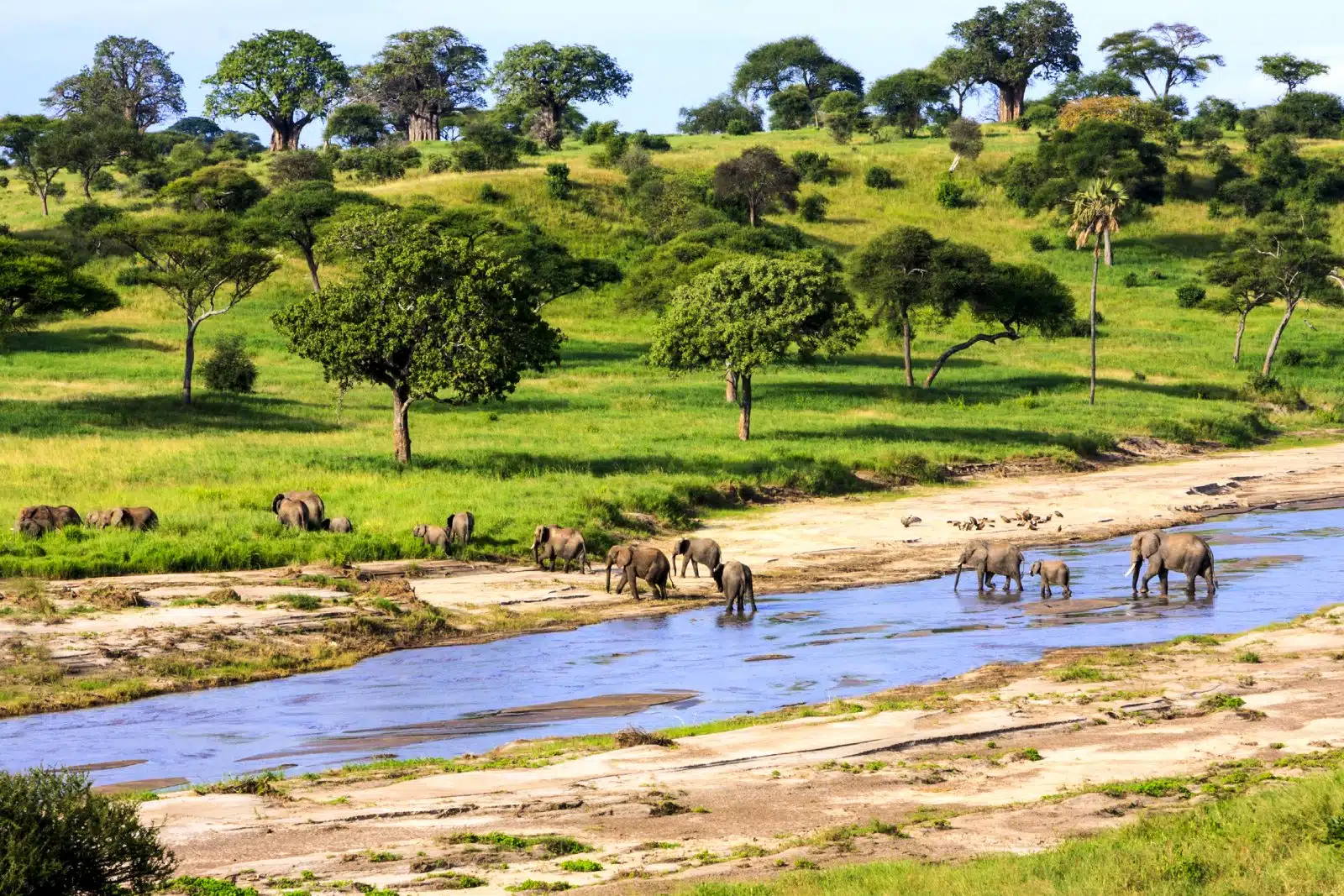
Image Credit: Shutterstock / GTS Productions
The Serengeti National Park is home to the vast migrations of wildebeest and zebras and an impressive array of predators. It’s a place where the cycle of life plays out on an epic scale, offering photographers moments of raw beauty and dramatic interaction. Photography in the Serengeti means keeping a safe distance from animals and using long lenses to capture intimate moments without disturbance. Photographers should follow the guidance of their guides and park regulations to ensure their presence does not impact the wildlife or their habitat. The Serengeti’s vast landscapes and abundant wildlife require patience and respect from those who wish to capture its essence, ensuring that this natural spectacle continues for generations to come.
Insider’s Tip
Invest in a good telephoto lens to capture close-up shots of wildlife without disturbing them, and always stay in your vehicle during game drives.
When to Travel
June to October is for the wildebeest migration, and December to March is for the calving season and predator interaction.
How to Get There
Fly into Kilimanjaro International Airport, then take a small aircraft to an airstrip in the Serengeti.
8. Iceland
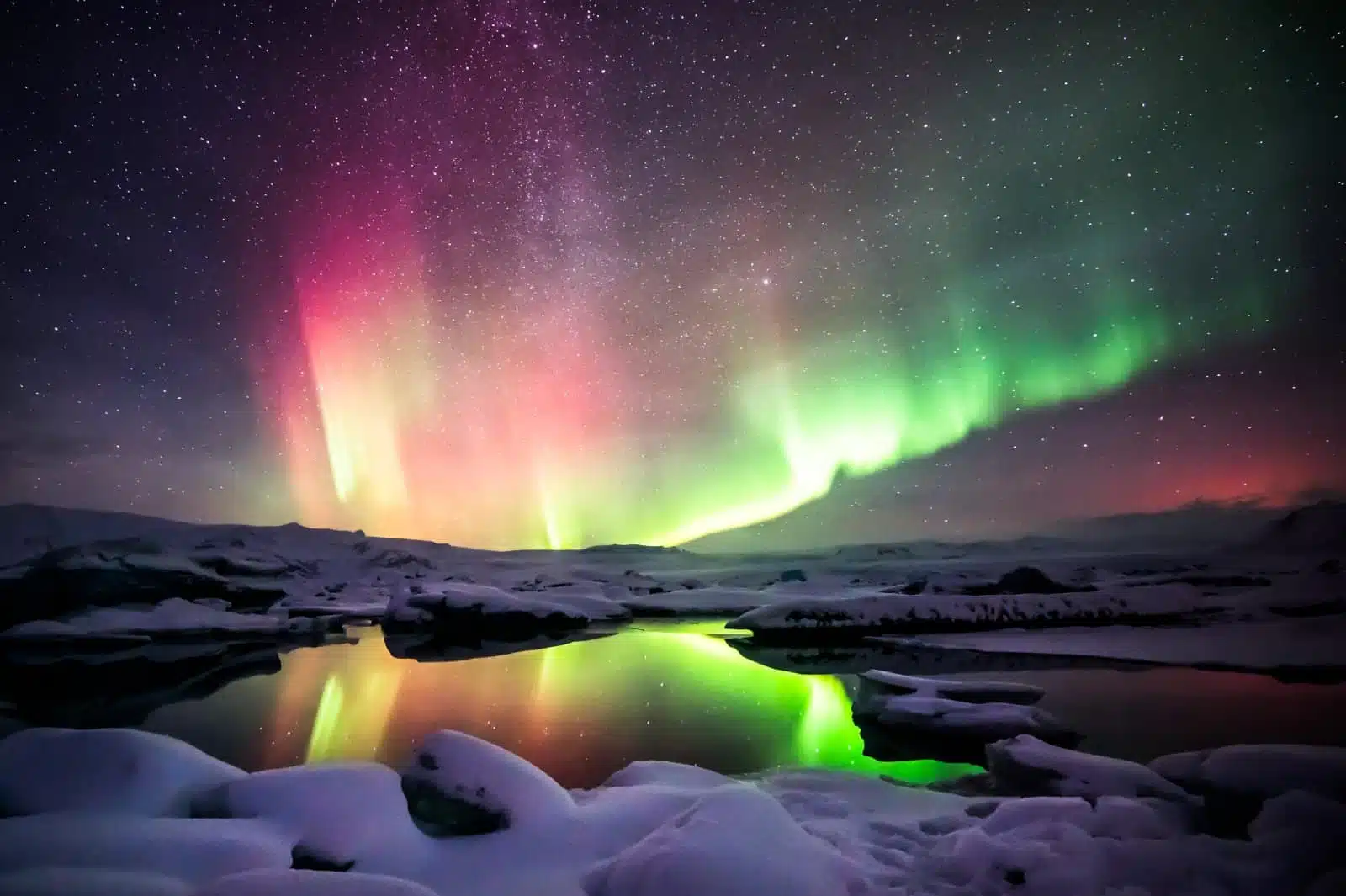
Image Credit: Shutterstock / Krissanapong Wongsawarng
Iceland, a country of stark contrasts and natural wonders, offers photographers otherworldly landscapes. From the aurora borealis dancing over snow-capped volcanoes to the serene beauty of its fjords and waterfalls, Iceland is a destination where the elements create art.
Practicing photography in Iceland involves respecting the fragile ecosystems that make its landscapes so unique. Staying on marked paths, refraining from moving rocks or vegetation to get the perfect shot, and being mindful of nesting birds or delicate mosses are all crucial. Iceland’s weather can be unpredictable, and photographers should prepare accordingly, ensuring their quest for the perfect photo does not risk them or the natural environment.
Insider’s Tip
Stick to marked paths when photographing Iceland’s natural attractions to prevent damage to the vegetation and soil, and be mindful of the weather conditions to ensure your safety.
When to Travel
Summer (June to August) is for midnight sun photography, and winter (November to February) is for northern lights.
How to Get There
Fly into Keflavík International Airport and rent a car for the most flexibility in exploring.
9. Angkor Wat, Cambodia
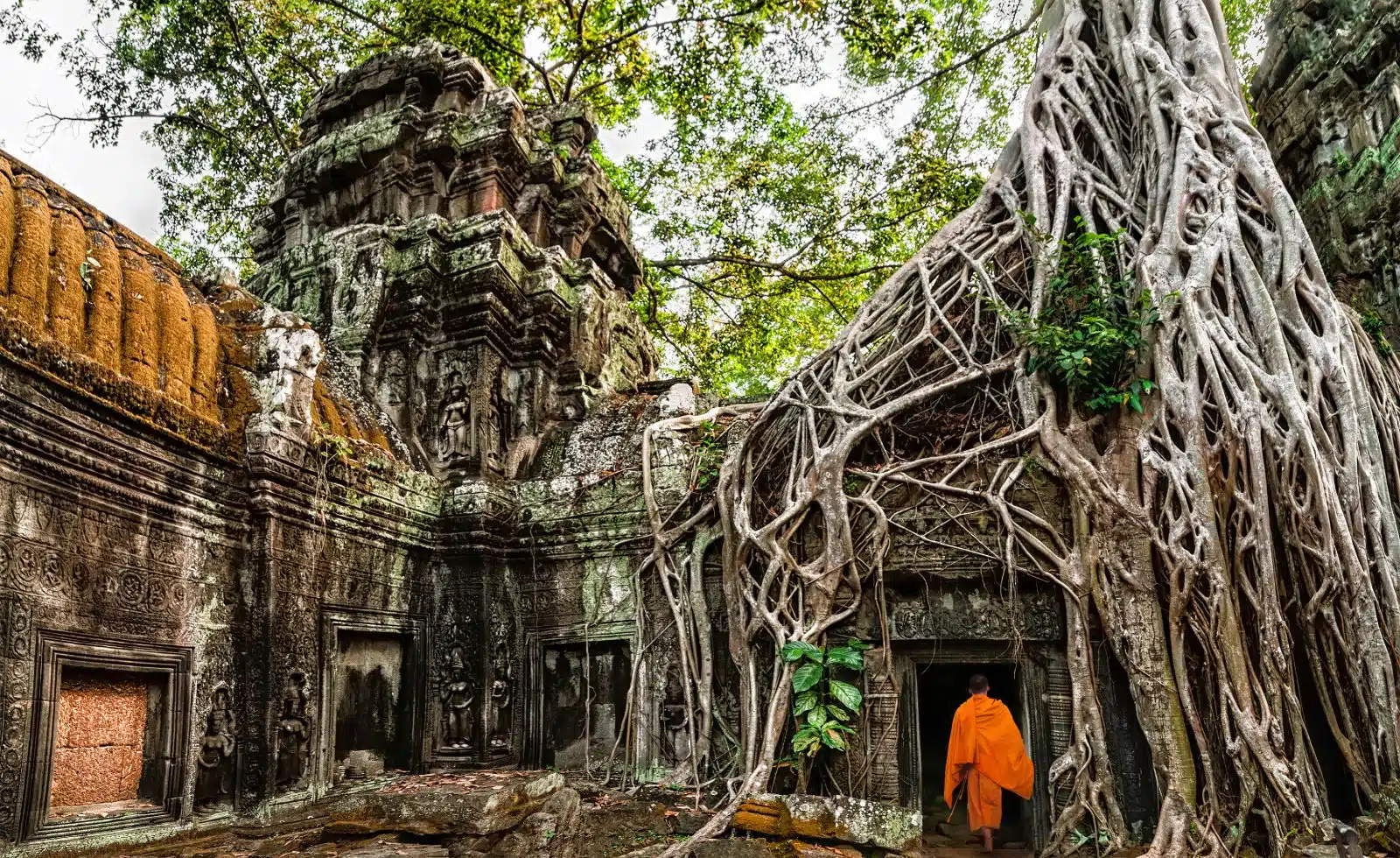
Image Credit: Shutterstock / Perfect Lazybones
Angkor Wat, the jewel of Cambodia’s ancient Khmer Empire, showcases the country’s rich historical and architectural legacy. This sprawling temple complex, originally constructed in the early 12th century, is the largest religious monument in the world and offers photographers a unique blend of spiritual significance and architectural grandeur. The intricate bas-reliefs and the grand scale of the temples against the backdrop of lush forests and rising sun create a mesmerizing scene for photography enthusiasts. Photographers are encouraged to tread lightly, staying on established paths to protect the site’s fragile ruins and respecting the sanctity of active religious sites within the complex. The best photographs of Angkor Wat often come from exploring its less-visited corners at dawn or dusk, when the play of light and shadow brings the ancient stones to life. Responsible travel photography here also means engaging with the local community in a way that supports sustainable tourism, ensuring that the benefits of your visit extend beyond the temple grounds.
Insider’s Tip
Dress modestly when visiting Angkor Wat to show respect for its spiritual importance, and avoid using flash photography inside the temples to preserve the ambiance and the ancient artworks.
When to Travel
Dry season from November to February for cooler temperatures and less humidity.
How to Get There
Fly into Siem Reap International Airport, with Angkor Wat just a short drive away.
10. Galápagos Islands, Ecuador
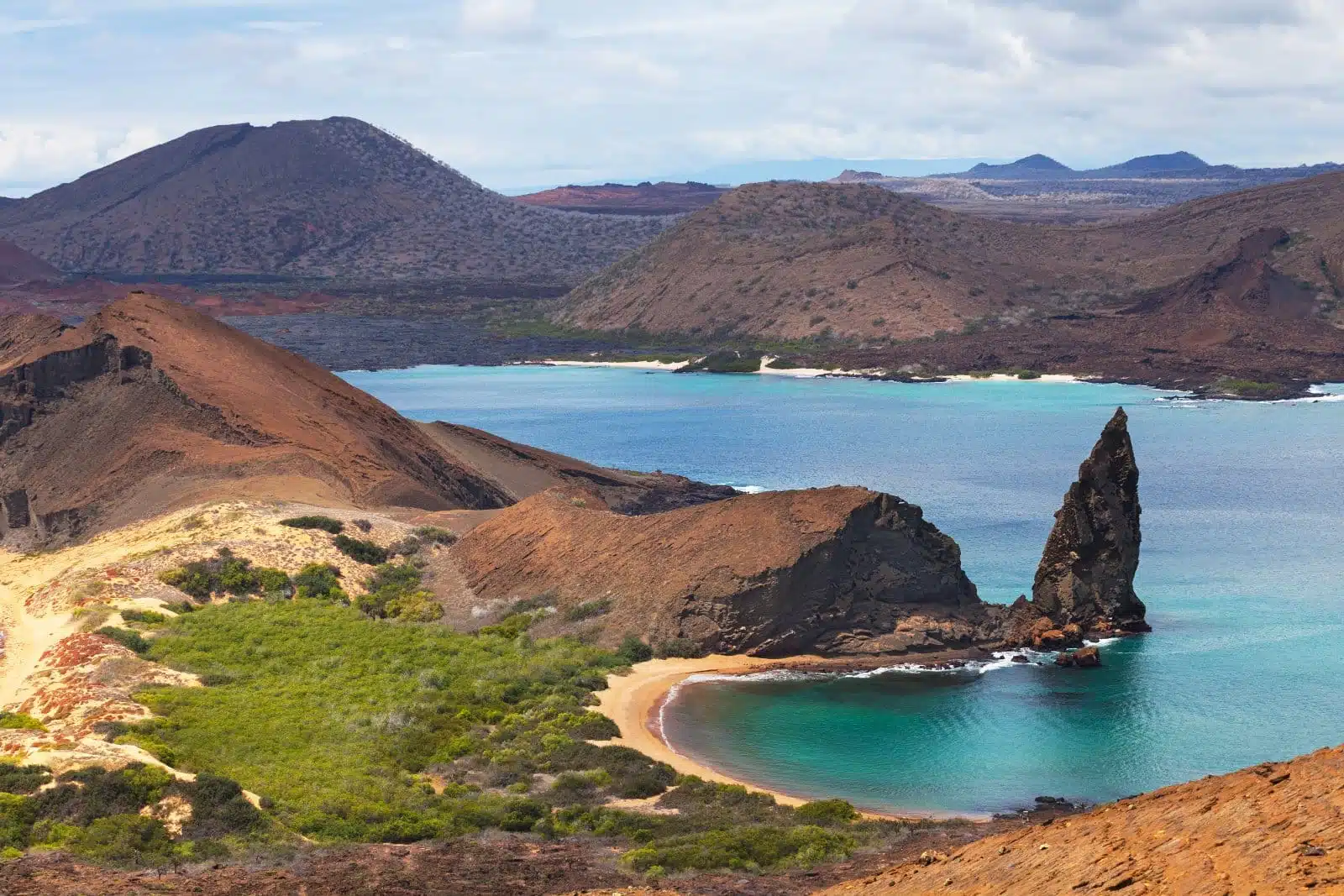
Image Credit: Shutterstock / sunsinger
The Galápagos Islands, Ecuador’s unparalleled showcase of biodiversity, are a haven for wildlife photographers drawn to its unique species and pristine ecosystems. The archipelago’s isolation has given rise to an extraordinary variety of plant and animal life, including the famous Galápagos tortoises, marine iguanas, and blue-footed boobies, many of which show no fear of humans due to the lack of natural predators. This proximity allows for incredible wildlife photography opportunities but also requires a heightened sense of responsibility. Photographers must follow strict guidelines set by the Galápagos National Park, including maintaining a minimum distance from the animals, staying on marked trails, and not using flash photography. Capturing the natural behaviors of these unique species without impacting their environment or well-being is the essence of responsible photography in the Galápagos. Visiting with a certified naturalist guide enriches the experience. It ensures that your presence contributes to the conservation efforts that keep the Galápagos a living laboratory of evolution.
Insider’s Tip
Use a zoom lens to photograph the islands’ wildlife, ensuring you don’t disrupt their natural behavior or environment, and always be accompanied by a certified naturalist guide.
When to Travel
December to May for warmer, calmer seas and active marine life; June to November for cooler temperatures and clearer waters.
How to Get There
Fly to Quito or Guayaquil, then take a domestic flight to the Galápagos Islands’ Baltra or San Cristóbal airports.
11. New Orleans, Louisiana, USA
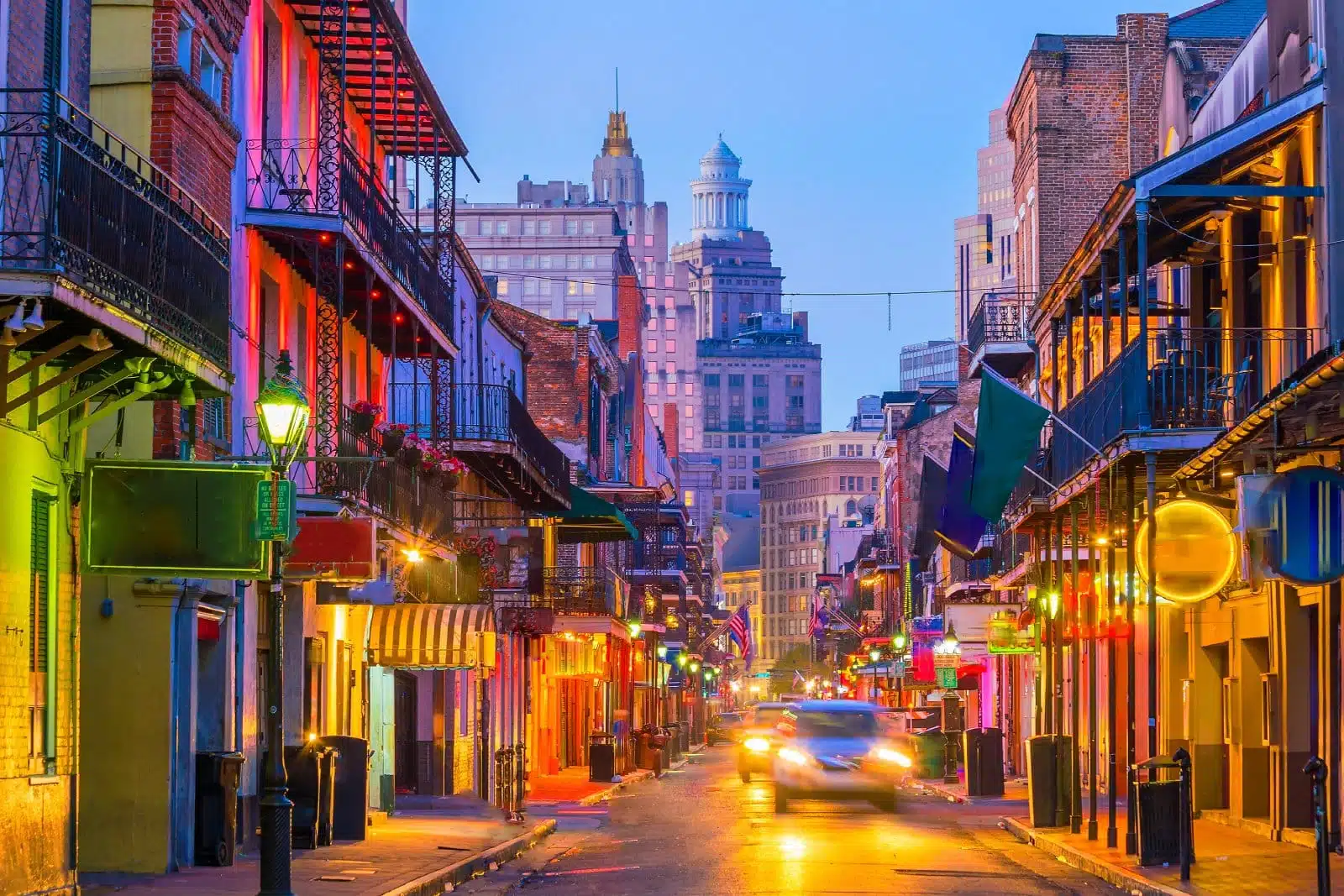
Image Credit: Shutterstock / f11photo
New Orleans offers photographers a vibrant palette of subjects. From the historic French Quarter’s wrought-iron balconies to the spirited parades of Mardi Gras, the city is a feast for the senses. Capturing New Orleans through a lens means diving into its unique cultural celebrations, understanding the significance behind its historic architecture, and portraying the resilience and spirit of its people. Responsible photography in New Orleans involves engaging with the community respectfully, especially during cultural festivals like Mardi Gras and Jazz Fest. Photographers are encouraged to seek permission before photographing individuals, particularly when people celebrate or participate in personal moments. This respect for personal space and acknowledgment of the subject’s dignity enhances the authenticity of the images captured.
Insider’s Tip
Engage with local musicians and performers before photographing them, showing appreciation for their art and asking for permission to capture their performance.
When to Travel
Late winter to early spring (February to May) to experience Mardi Gras and the Jazz Fest with cooler temperatures.
How to Get There
Fly into Louis Armstrong New Orleans International Airport, with the city center just a short drive away.
12. Bhutan
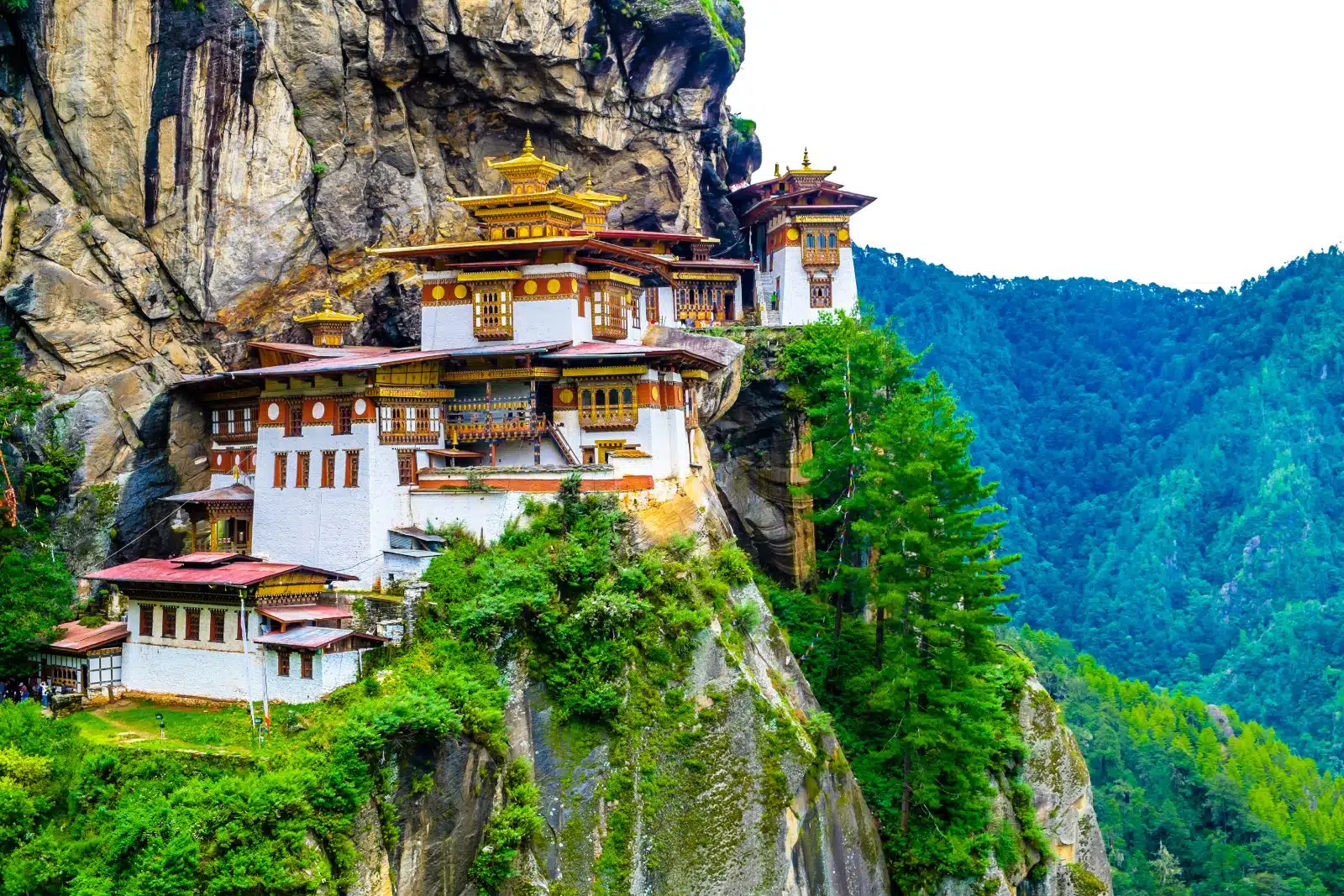
Image Credit: Shutterstock / MC_Noppadol
Bhutan, a kingdom on the eastern edge of the Himalayas, is known for its monasteries, fortresses (or dzongs), and dramatic landscapes that range from subtropical plains to steep mountains and valleys. Photography in Bhutan offers a window into a culture deeply rooted in Buddhism, showcasing festivals, traditional dress, and a way of life that prioritizes Gross National Happiness over material wealth. Responsible travel photography in Bhutan means capturing the essence of its culture and people without intruding on their daily lives or spiritual practices. Visitors should always ask for permission before taking photos, especially during religious ceremonies or in dzongs. Bhutan’s approach to tourism, focused on sustainability and cultural preservation, requires photographers to be mindful of their impact, ensuring that their work respects and honors the subjects and environments they depict.
Insider’s Tip
When visiting monasteries and religious sites, always ask for permission before taking photos, and be discreet to maintain the sanctity of these spaces.
When to Travel
Spring (March to May) is for blooming flowers, and autumn (September to November) is for clear mountain views.
How to Get There
Fly into Paro International Airport, the only international airport in Bhutan, typically via flights from India, Thailand, or Nepal.
The Bottom Line
Responsible travel photography is about more than capturing beautiful images; it’s about doing so in a way that respects our planet and its inhabitants. By following these guidelines and tips, you preserve the integrity and beauty of the destinations you visit. Remember, the most powerful photographs tell a story of connection, respect, and understanding, bridging cultures and inspiring others to see the world through a lens of compassion and responsibility.
More From The Green Voyage
12 Best Practices for Sustainable Travel in 2024 – How to Travel With Minimal Environmental Impact
Unlocking Hotel Perks – A Traveler’s Guide to Maximizing Hotel Reward Programs for Optimal Benefits
Travel Hacks for Frequent Flyers – 6 Tips and Tricks to Make the Best of Air Travel
The post Responsible Travel Photography 2024 – Capturing the World’s Beauty first appeared on The Green Voyage.
Featured Image Credit: Shutterstock / eldar nurkovic.
